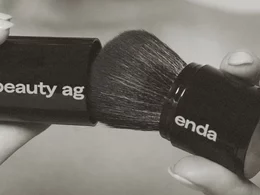
You either love the cold or you hate it. That’s your personal preference for tolerance, intolerance and enjoyment. Whether you enjoy the refreshing, exhilarating and titillating sensations of the extreme cold, there is one important fact to embrace: the cold is extremely healing and vital to your health and wellbeing. Enter Cryotherapy…
Growing up in Germany, I was no stranger to the cold. In fact, I used to hate the cold! I was always playing sports with my numb hands down my shorts wishing for the soccer match to be over with so I could go warm up in the locker room showers. It wasn’t until I undertook my studies as a naturopath that I learned that cold therapy (specifically using cold water) was a lifesaver for the sick and dying. Early pioneers of the Naturopathic Movement such as Vincenz Priessnitz (1799-1851) observed wildlife healing themselves in nearby brooks and streams. He later healed himself of a life-threatening accident using the same methods as he observed in nature. Other early naturopaths such as Sebastian Kneipp (1821-1897) had much success in healing the critically wounded and sick by simply hosing his patients off with ice water. Under Kneipp’s depiction of disease, cold water cures work by affecting the blood. They dissolve foreign matter, cleanse the blood of this matter, aid in circulation, and strengthen the body as a whole. Now that you have a basic knowledge of the importance of cold therapy, let’s dive (no pun intended) into various healing benefits.
- Preliminary studies show the benefits of cryotherapy include:
- Pain relief and muscle healing
- Weight loss
- Reduced inflammation
- Preventing dementia
- Preventing and treating cancer
- Reducing anxiety and depression
- Improving symptoms of eczema
- Treating migraine headaches
I borrowed from US Cryotherapy a beautiful explanation on how cryotherapy works inside our bodies: “WBC (whole body cryotherapy) from a review of various studies and sources shows two very prominent systemic responses. ‘Cold Shock’ (dropping the skin temperature on a whole body level and primarily around the core where the concentration of thermo-receptive (nerve ending neurons) are located send distress signals to the brain. The reactivity in the brain is two-fold. First, there is a CNS reaction whereby the hypothalamus directs the endocrine system to release endorphins in vast amounts quickly. Additionally, cold shock protein (norepinephrine) is released in the brain (said to be twice the average producing levels). Norepinephrine is a powerful anti-inflammatory protein which inhibits TNFa production (an inflammatory cytokine produced by the immune system in response to injury, foreign bodies, etc.) Endorphins are the feel-good hormone, elevating mood, an opioid-like response, blocking pain reception signals. This CNS response is the Symptomatic reaction we get with whole body cryotherapy to pain and inflammation. Patients experience improved range of motion with pain reduction almost immediately.
Additionally, the brain senses rapid heat transfer (hypothermic simulation) due to extreme skin temperature change, thus creating a parasympathetic (Autonomic Nervous System) reaction with circulation. Blood draws from the extremities to the core to protect from heat transfer. This occurs within 30-seconds to one minute of exposure. Blood pooling in the core oxygenates and is enriched with nutrients. Upon exit of the chamber, as the skin temperature rapidly rewarms, the brain releases the blood supply back to the extremities with a vasodilation estimated to be 3:1. Ironically, over the short duration exposure, there is little change in core temp. This process flushes areas of injury of toxic waste and bad cells replenishing with good blood to stimulate cellular regeneration. This is the systemic circulation benefit dealing with underlying condition (Regen). This process should not be thought of as comparable to ice or immersion. It does not have a gradual metabolic effect, it has a rapid thermogenic and peripheral effect with the added chemical release mentioned above.”
There are many ways to achieve whole-body cryotherapies such as electric, liquid nitrogen and cold plunge.
Tell yourself, I will experience all three modalities and rate my experience of each.
- How much did I enjoy the treatment?
- How much did it cost?
- How much time did it take?
For the full story contact me at:
info@healthshift.com
www.healthshift.com










